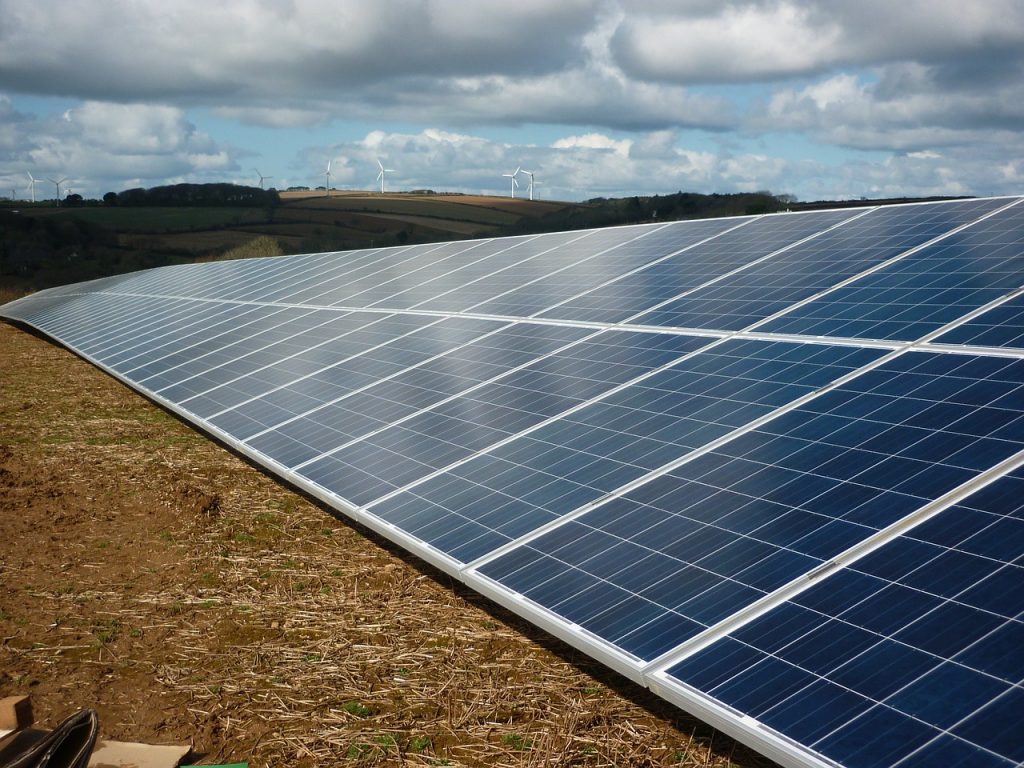Golf Courses Are Being Replaced By Solar Farms
In a push to combat climate change, golf courses across the nation are being converted into solar farms.
This article is more than 2 years old

The country club lifestyle is not something the average person typically has the luxury of enjoying. Golfing itself is an expensive pastime, with some equipment costing thousands of dollars. Not to mention the fees that go along with country club memberships, costs can easily soar well into the 10’s of thousands. It’s a lifestyle reserved for the rich and gluttonous, and some are now realizing just how gluttonous these sprawling golf-club resorts are, especially in terms of the measurable strain they put on the environment. ZME Science reported that because of this, more and more golf courses are being turned into solar farms.
One might be surprised to learn that golf courses, although they are undoubtedly green spaces, actually impose quantifiable detriments to the environment. First, to ensure that a golf course stays as green as possible its needs to be pumped with around 2 billion gallons of water daily, that water could be much better purposed if it was sent to places like Flint, Michigan where they are currently in the midst of a water crisis. Secondly, golf courses are treated with a range of potent chemicals to keep insects and other organisms that threaten the integrity of the green at bay. This poses harmful risks to local wildlife and could upset the delicate ecosystem of a local area. Additionally, they are barren, meaning that wildlife, like deer, that could have potentially made their home on such land, are effectively pushed out. The resulting logic to come out of these measurable environmental deficits has been to turn them into solar farms.

According to Newsday, in 2019 a driving range located in Long Island, New York was converted into a solar farm. The 27-acre former golf course was initially a landfill but was repurposed in the 1980s. Now it has evolved once again to become one of the area’s cleanest sources of energy. Adrienne Esposito, executive director of the nonprofit Citizens Campaign for the Environment had been campaigning with his team for some time to convert the land and now he is looking ahead to the promise of the future. “This solar farm is what hope and optimism look like for our future We know over the next 20 years, the sun will shine, the power will be produced and we will have clean power,” said Esposito.
NextEra spokesman Bryan Garner spoke about New York as a whole and referred to this project as a step towards achieving the state’s “ambitious renewable energy goals.” Other states have also taken strides similar to that of New York. Rockwood Golf Course in Independence, Missouri was recently converted to a solar farm. And in Cape Cod, Massachusetts a golf course that was initially being zoned to become apartment housing is now instead being made into a solar farm, as well. Converting golf courses into renewable solar energy sources is a trend that also can be seen happening overseas, Japan is just one country that has begun instituting a nationwide plan to convert its golf courses.
This is an encouraging trend, especially for a world that is currently being pummeled by the emerging effects of climate change, and it likely has been sparked in part due to both the public and policymaker’s growing awareness and increased acknowledgment of the fact that measures must begin to be implemented to try and mitigate the environmental challenges to come in the future. It also comes on the heels of those reconsidering and reorganizing their priorities as the world continues to reel in the powerful wake of a global pandemic.




